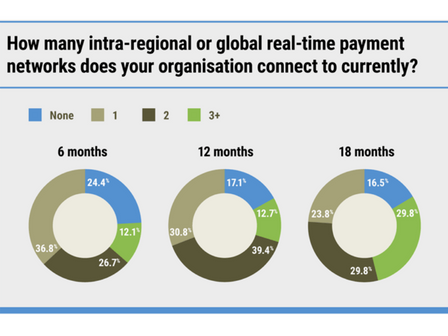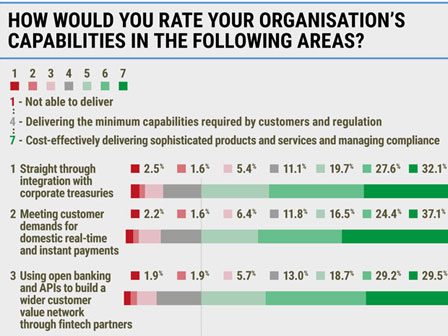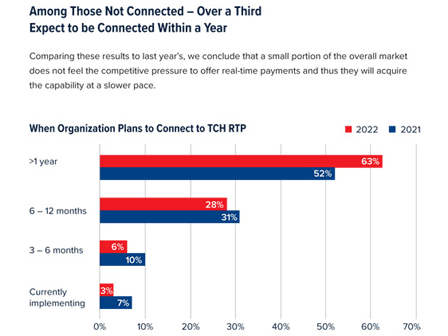In part one of this two-part blog series, we introduced Finextra’s 2022 annual survey of international payments modernization trends, highlighting shifts in the self-assessed performance and readiness of banks and financial institutions as they navigate complex transformations, as well as how customer demands may be reshaping their priorities and motivations.
Now we’ll take a closer look at how respondents are approaching key interoperability challenges and the integration of emerging networks, as well as the increasing role of cloud and Payments as a Service (PaaS) solutions in accelerating global payments modernization.
Interoperability: Existing Challenges & Expanding Solutions
Real-time payments may already be a game-changer when it comes to executing domestic payments, but in the absence of interoperability, they simply aren’t viable in the context of cross-border transactions in most regions. In an ideal world, all financial institutions and their customers would enjoy universal connectivity between international payment hubs, and in fact, this is currently the ultimate goal of some promising initiatives, including P27 in Scandinavia and the IXB collaboration between EBA Clearing, SWIFT, and The Clearing House (TCH).
However, as things currently stand, financial institutions remain in the process of increasing the connectivity of their own systems to existing and emerging payment networks. Importantly, this is a considerable challenge even as it relates to domestic real-time payments, as many organizations are already faced with the need to transact on multiple payment networks within their country of operation.
Fortunately, institutions that haven’t already done so appear well on their way to achieving seamless connectivity to multiple domestic networks, thanks in large part to the rise of cloud-based infrastructures and PaaS models. More specifically, 73% of survey respondents say they plan to connect to more networks within the next 12 months.
In terms of interoperability with cross-border networks, organizations have a growing set of regulatory and competition-related incentives to increase connectivity and improve readiness. However, it’s important to keep in mind that such a transformation will need to be achieved not only at the level of systems but across the entire organization. Put simply, in order for transactions to be truly seamless, institutions will need to reconfigure business processes across multiple departments, integrating their customers’ unique requirements to connect to particular networks, and ultimately gaining the capability to move funds effortlessly between payment rails and systems.
It is also worth noting that many institutions are taking an increasingly forward-looking approach to cross-border interoperability, with more than half of all respondents (54.9%) expecting to add support for two or more new cross-border payment networks in the next 12 months. This could potentially be in anticipation of several emerging alternative networks and solutions in the space, including VISA B2B and CurrencyCloud, Blockchain-based payment rails being built on Distributed Ledger Technology (DLT), and possibly even the introduction of Central Bank Digital Currencies (CBDCs).
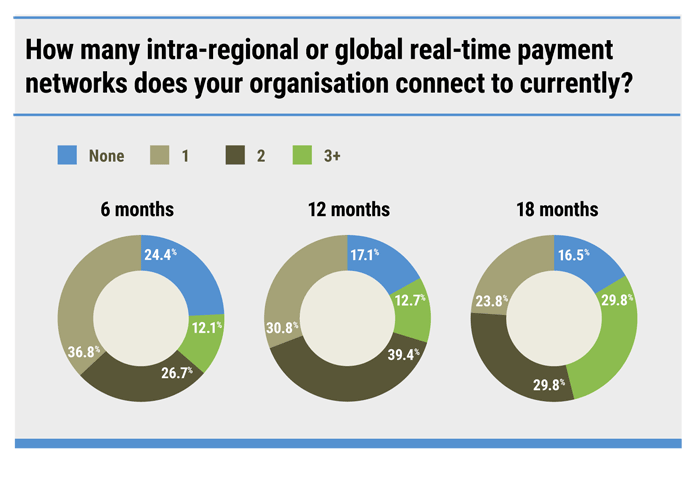
The Evolving Role of Cloud & PaaS in Accelerating Modernization
Over the years, a number of reservations have been expressed about utilizing the cloud for payments, primarily due to concerns surrounding security, risk and compliance issues. However, with the bulk of those issues having been addressed, many banks are finally removing the friction associated with maintaining hardware and physical network connections in favor of moving forward with a cloud-first strategy.
In fact, our survey revealed the cloud to be the dominant deployment foundation for payments systems today, with 69.5% of respondents stating that it’s where most of their systems are currently deployed. Similarly, the utilization of PaaS providers has also grown in the span of a year, with 11.4% saying PaaS accounts for the majority of their payments systems, up more than 2% from 2021.
According to the McKinsey Global Payments Report, the term PaaS simply implies the use of partners to execute the integration of cutting-edge cloud-based platforms and specialized services, such as card issuing, payments clearing, cross-border transactions, disbursements and e-commerce gateways. Overall, leveraging a PaaS provides a faster path to payment modernization without incurring unreasonably high upfront investments. Based on cost savings alone, this trend is almost guaranteed to continue for the indefinite future.
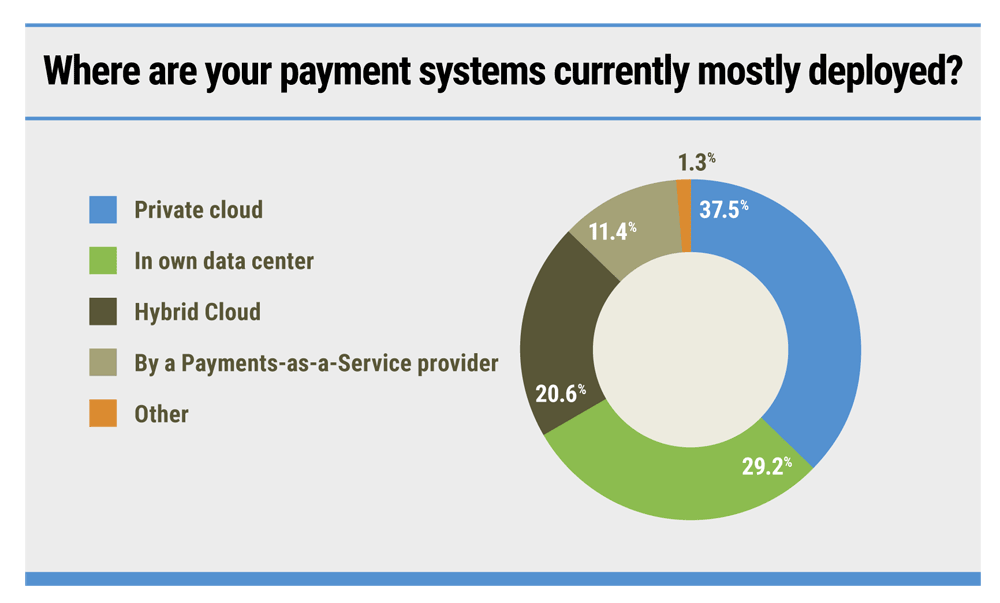
In addition, there is an increase in institutions leveraging cloud-based and PaaS solutions. The beginning of 2022 saw a considerable year-over-year acceleration of payments modernization efforts more generally.
In 2021, when asked about plans to implement new payments solutions as a replacement of one or more systems, only 14% claimed to have recently completed a project. This is in stark contrast to this year’s results, in which 58.7% of respondents said they were either in the middle of a project or had recently completed one, and over 25% said they had plans to get underway before the end of 2022.
There a number of reasons for this rapid acceleration. For one thing, institutions are now under more pressure to support ISO 20022 messaging types. Separately, many banks already had modernization initiatives in the works but had to delay those efforts as a result of the COVID-19 pandemic. And finally, we can’t rule out the fact that financial organizations around the world are simply eager to reap the benefits of their strategic investments into the future of payments.
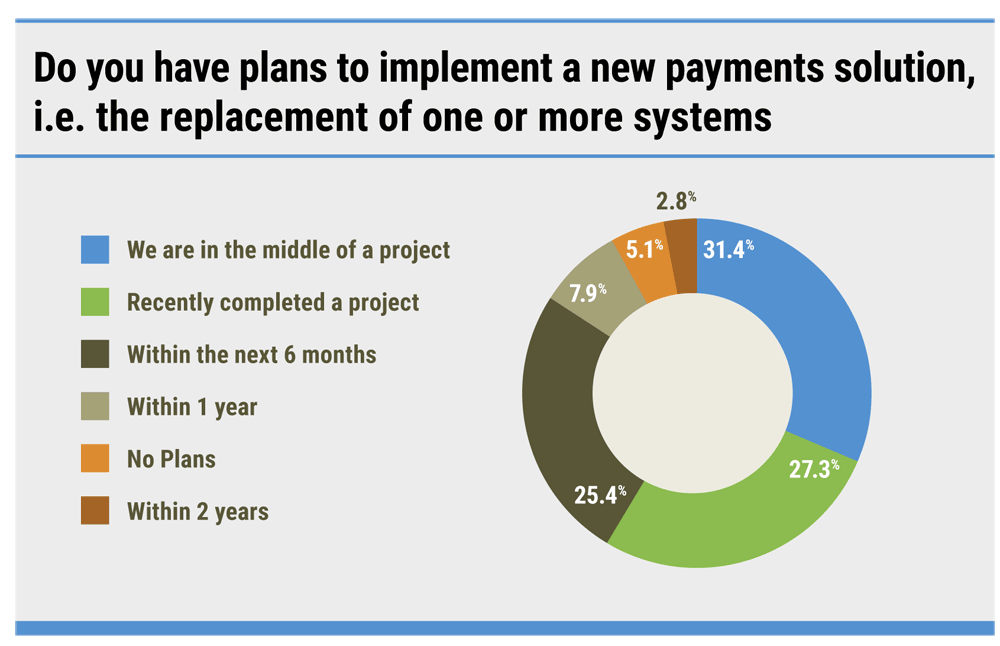
Interested in uncovering the entirety of insights from Volante’s latest annual survey? Click here to access the full report.


